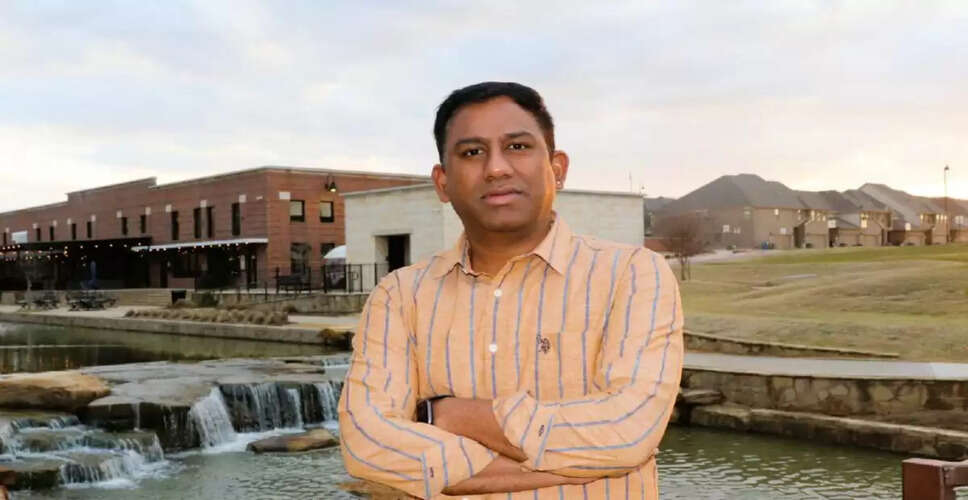Transforming Enterprise IT: Insights from Thirusubramanian Ganesan

Navigating the Future of Enterprise Technology
In a rapidly evolving landscape marked by technological advancements, organizations face the challenge of innovating while ensuring operational stability. Leaders who grasp both traditional systems and modern architectures are essential to achieving this balance.
Thirusubramanian Ganesan, a Senior Software Engineer with over two decades of experience, embodies this unique combination. His contributions to banking, insurance, and financial services have consistently resulted in scalable, secure, and intelligent enterprise solutions. In this interview, Ganesan shares his journey, the obstacles he has overcome, and the technologies that are shaping the future of enterprise IT.
Q: With nearly 20 years in enterprise IT, what have been your main areas of focus?
Ganesan: My primary focus has been on comprehensive enterprise modernization—upgrading outdated systems into scalable, cloud-native platforms while ensuring continuity. I have extensive experience in software development, application modernization, and large-scale system integration. Over the years, I have specialized in technologies such as Artificial Intelligence, Cloud Computing, Business Intelligence, Data Mining, Big Data, and the Internet of Things. These innovations have allowed me to create systems that are not only functional today but also adaptable for the future.
Q: What philosophy guides your work in enterprise environments?
Ganesan: I believe that technology should not only address current business needs but also foresee future challenges. Each project presents a unique chance to develop solutions that are resilient, meaningful, and capable of evolving over time.
Q: Can you discuss the technologies and platforms you've utilized for modernization efforts?
Ganesan: Absolutely. I have led full-stack development, cloud migration, and system remediation using a technology stack that includes .NET, SQL Server, Jenkins, and Google Cloud Platform. My responsibilities have included critical initiatives like Windows Server upgrades, CI/CD implementation, legacy system decommissioning, and API integrations. These efforts have collectively improved system reliability, maintainability, and performance.
Q: What high-impact solutions have you developed in the financial sector?
Ganesan: I have worked on intricate financial systems such as ISO Connect and EMV CapEx, which support ATM and card management by merging legacy mainframe technologies with modern web services. Additionally, I have developed secure document management systems, created advanced reporting functionalities using tools like Crystal Reports, and optimized digital workflows—all designed to meet regulatory and operational requirements.
Q: What challenges did you address in the insurance sector?
Ganesan: In the insurance domain, I concentrated on integrating billing platforms, developing user-friendly point-of-sale web applications, and enhancing policy management and payment processing. A significant achievement was designing rating engines integrated with Oracle SoftRater, enabling real-time premium calculations and greatly improving the efficiency of policy administration systems.
Q: Your contributions extend into research and thought leadership. Can you elaborate?
Ganesan: I have always appreciated the connection between academic depth and practical application. Over the years, I have authored more than 48 research papers in fields such as AI, IoT, Big Data, and Business Intelligence. I believe that merging theoretical insights with practical experience leads to robust, business-aligned systems.
Q: Can you provide examples where your research influenced real-world projects?
Ganesan: One instance is a healthcare cloud project where I integrated fog computing and AI-based ECG signal processing, inspired by a paper I wrote on scalable health monitoring frameworks. This architecture supported real-time remote patient care with enhanced data security and low-latency decision-making. In finance, I applied research on hybrid encryption and dynamic task scheduling to create a secure, high-throughput document management system that streamlined regulatory workflows.
Q: How do you tackle complex modernization projects involving legacy systems?
Ganesan: Such projects demand precision and careful planning. One of my key strategies is to establish a centralized integration layer that allows legacy and modern systems to coexist during phased modernization, minimizing business disruption. I also developed automated data validation frameworks using SQL Server and Jenkins to ensure accuracy and stability throughout the transformation process.
Q: How have AI and data science shaped your approach to enterprise architecture?
Ganesan: I have utilized AI and data mining techniques to enhance risk assessment, claims processing, and customer segmentation. Additionally, I have contributed to enterprise scalability by creating reusable libraries, standardized documentation templates, and dynamic ETL pipelines, all of which improve data visibility and reduce manual overhead across departments.
Q: What trends do you foresee influencing the future of enterprise IT?
Ganesan: We are on the cusp of a significant transformation. The convergence of AI, Big Data, and cloud computing is leading us toward systems that are self-optimizing, predictive, and highly adaptive. Business intelligence is evolving from retrospective analysis to prescriptive analytics, empowering faster, smarter decision-making at every level of the enterprise.
Q: What are your thoughts on IoT and multi-cloud strategies in large enterprises?
Ganesan: IoT will revolutionize industries like logistics, healthcare, and infrastructure. However, its success hinges on secure, scalable integration architectures capable of managing large-scale, real-time data. Regarding multi-cloud environments, the focus must be on interoperability, compliance, and cost control—areas that IT leaders should prioritize to deliver consistent value across ecosystems.
Q: What fuels your passion for enterprise innovation?
Ganesan: I take pride in addressing complex challenges through innovation and collaboration. For me, it’s not merely about coding; it’s about shaping the future of business operations. Each project is an opportunity to make a significant impact, both strategically and technologically.
Conclusion
Thirusubramanian Ganesan is a distinguished technology expert who merges extensive technical experience with a visionary perspective. He is dedicated to constructing resilient, intelligent systems that empower businesses to grow, adapt, and maintain security. With a career focused on overcoming complex challenges and fostering digital innovation, Ganesan remains a trusted leader as enterprises navigate a rapidly changing landscape.
About Thirusubramanian Ganesan
Thirusubramanian Ganesan exemplifies a rare blend of technical expertise and visionary insight. With over 20 years in enterprise modernization, cloud strategy, AI integration, and research-driven development, he continues to influence the future of enterprise technology with precision and purpose. Whether modernizing legacy systems or pioneering next-generation architectures, his work serves as a model for intelligent, scalable, and secure digital transformation.
